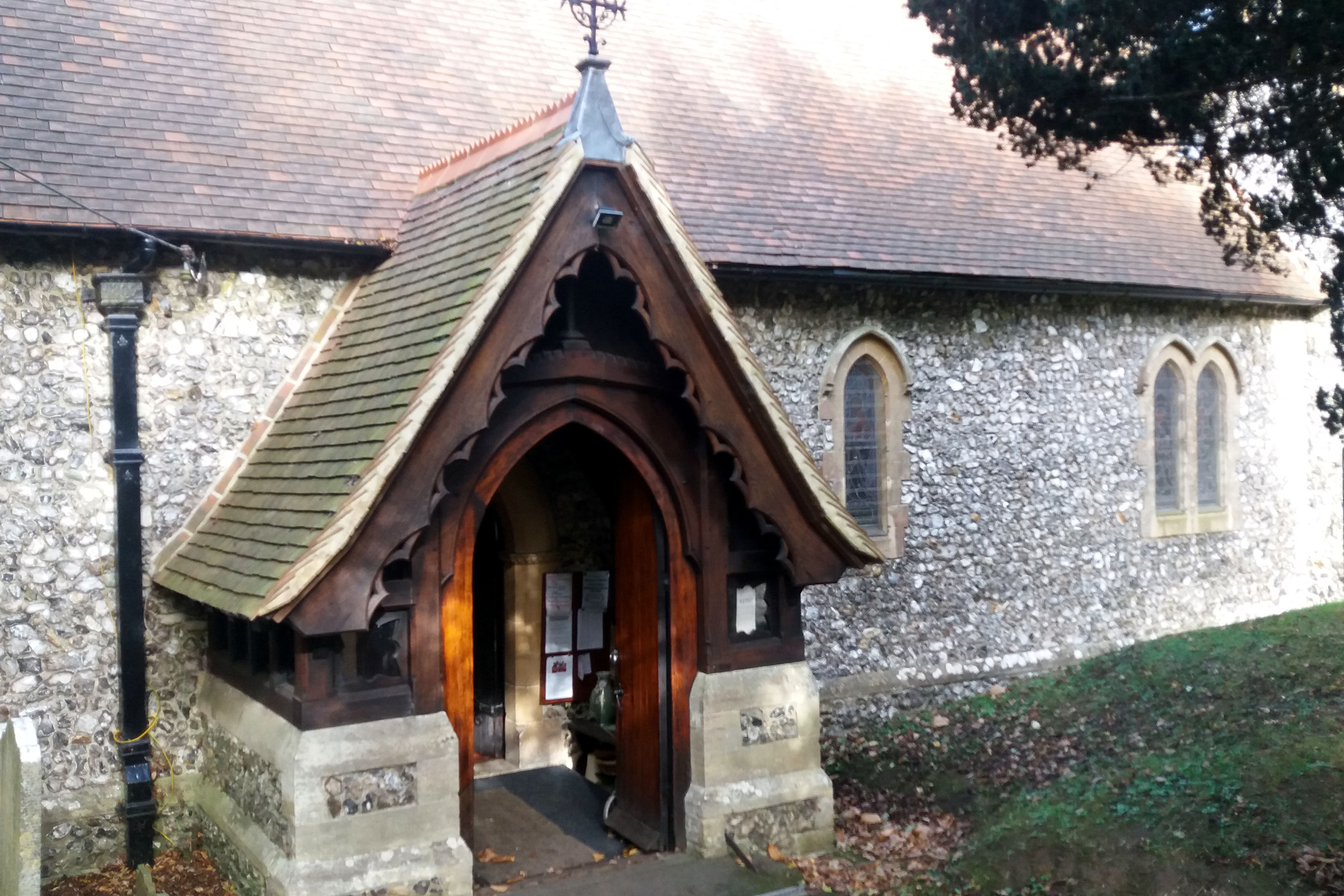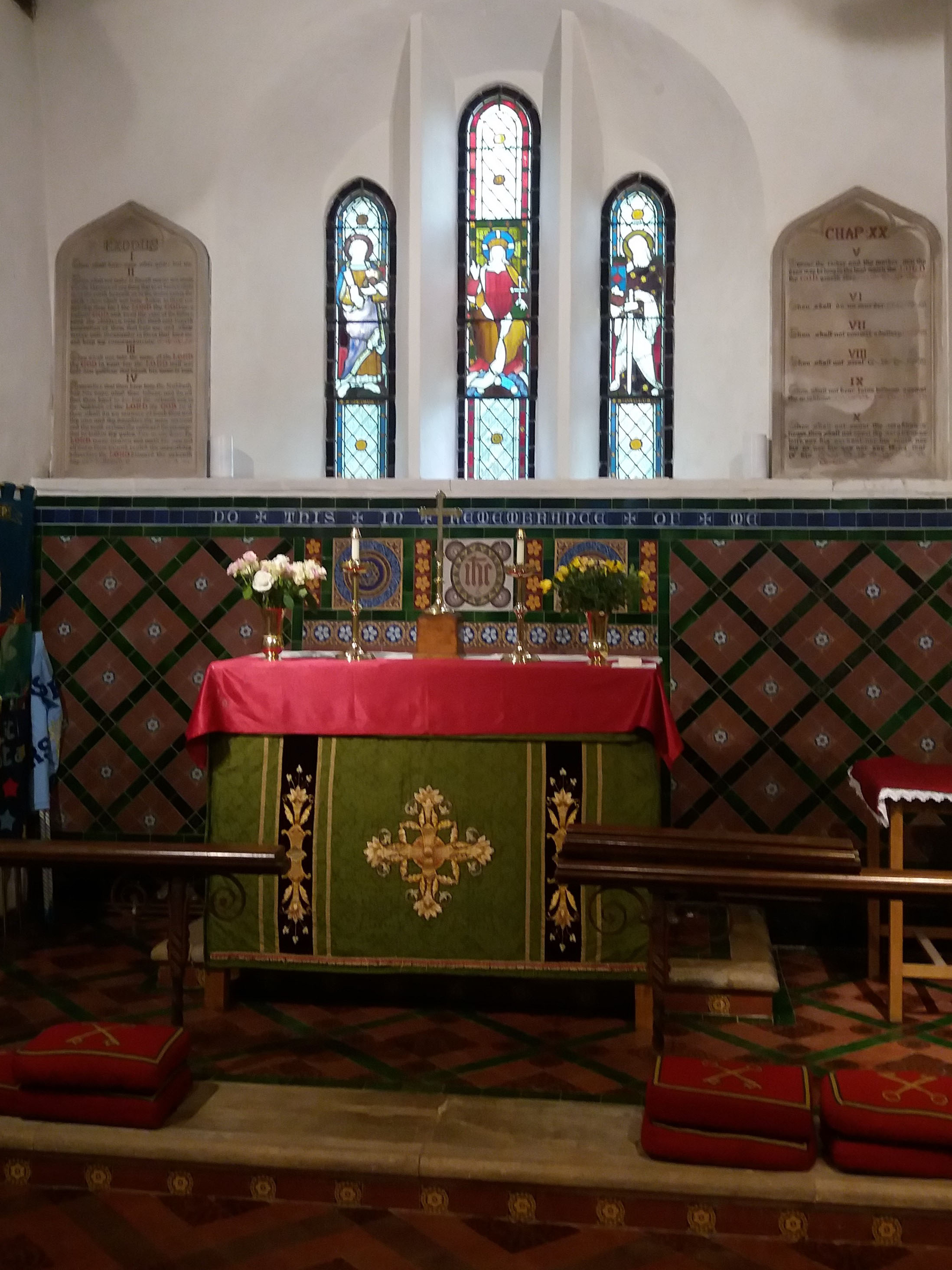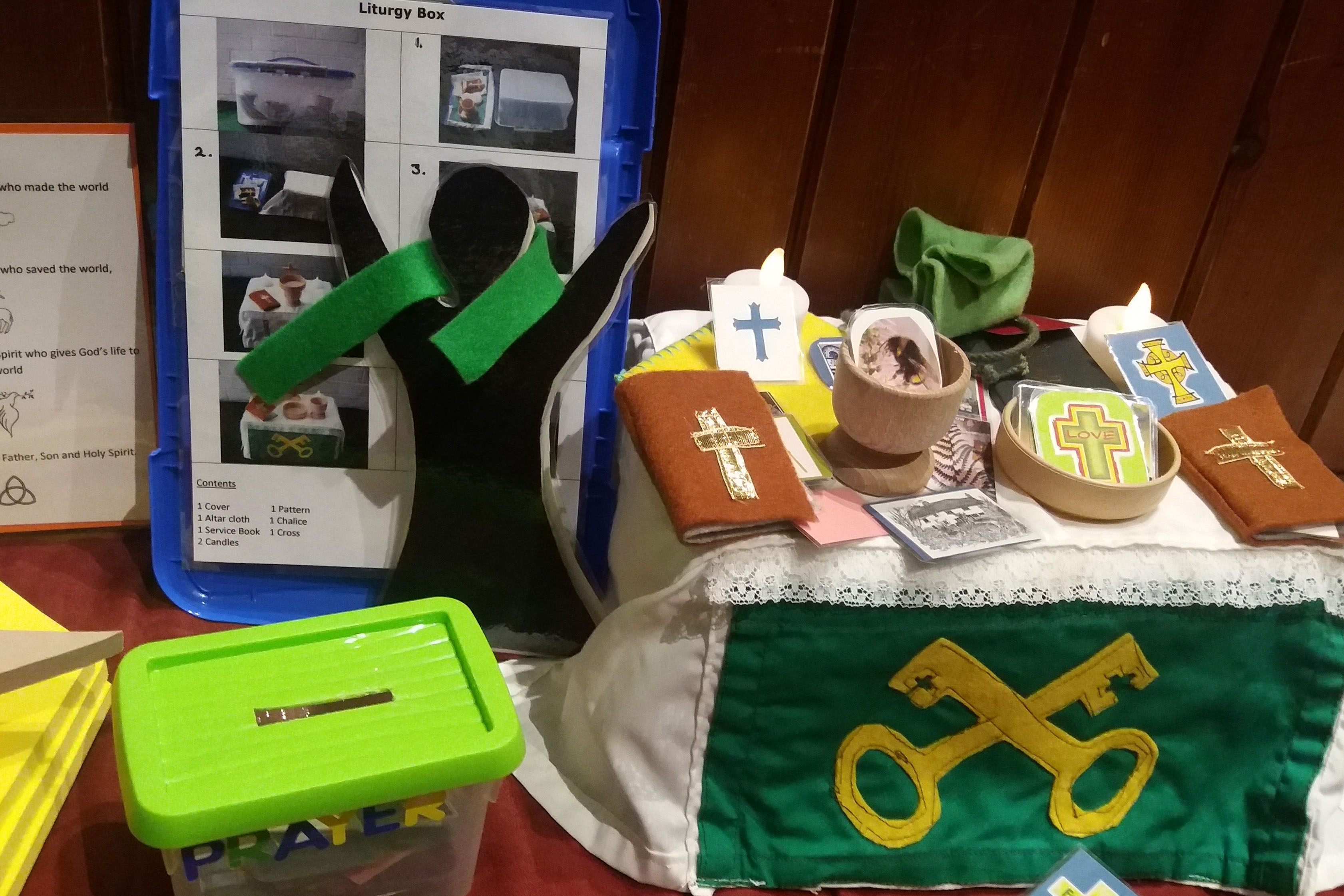| |
 |
 |
 |
| Comment on this report, or find other reports. |
 |
| Our Mystery Worshippers are volunteers who warm church pews for us around the world. If you'd like to become a Mystery Worshipper, start here. |
 |
| Find out how to reproduce this report in your church magazine or website. |
|
|
| 3249: St Peter's, Bredhurst, Gillingham, England |
 |
 |
 |
Mystery Worshipper: Verity.
The church: St Peter's, Bredhurst, Gillingham, Kent, England.
Denomination: Church of England, Diocese of Rochester.
The building: A quintessential early mediŠval ragstone village church, at least 900 years old, consisting of a very small nave, quire, side aisle and open porch. The side aisle has been cleverly partitioned with glass window and door so that it acts as the vestry, choir room and after-service coffee area. There is at least one bell, as it was tolling for the start of the service as we arrived. There are several small stained glass windows, which are pretty and in keeping with the style of the building. In the vestry there are two pieces of evidence of early paintings: along the edge of the south roof there is a painted garland, and a fragment of painting (I couldn't make out the image) that had been uncovered under the plaster above the south walls beams. A standard large covered font is at the back of the church close to the entrance, as is traditional in old churches. The website states that St Peter's was extensively rebuilt between 1865 and 1867, with a date on the downpipes outside showing 1866 and the font on the inside showing 1867.
The church: The South Gillingham Team Ministry (the Kent Gillingham has a soft initial G) consists of four churches: St Peter's Bredhurst, All Saints' Hempstead, St Paul's Parkwood, and St Matthew's Wigmore. There are five priests, including the team rector, two team vicars, one associate vicar, and an assistant curate. There are many joint services and events throughout the year. As well as weekly Sunday services at 11.00, there are earlier Prayer Book services and a monthly Little Stars service for young children and their families. Other children's activities include Explorers (who go exploring in the local woodland and fields); The Crew for older children; and Time for Tea, a bring-and-share tea, crafts, songs and stories hour held on the first Saturday of each summer month. There is also a club called Camilla's Club, which is aimed at children with additional needs and their families. Twice a month there is an evening service: either an "anything goes" kind of service or a quiet service.
The church's website is well worth a visit – there are some amusing descriptions in some sections, which immediately gives the church a human feel. (They do know it needs updating, though.)
The neighbourhood: The village of Bredhurst, in the southern part of the parish, has a history going back to medieval times. It's rather a large village by Kent standards: it has a pub, a few small business, a local garage, and many newer houses (there was a lot of building in Kent villages in the 70s, so most of the new houses seem to follow this pattern and style). There is also a village hall that and a good playing field. There is a voluntary-controlled Church of England primary school with a roll of approximately 120 pupils. The church is down a village road (lane) and is split from the graveyard by this lane, which makes the graveyard a quiet and dedicated space for remembrance.
The cast: The Revd Pam Alexander, team vicar.
The date & time: Sunday, 29 October 2017, 11.00am.
What was the name of the service?
Songs of Praise: Understanding the Eucharist.
How full was the building?
Comfortably full. It's a very small building, so there were about 30-40 people in the congregation, plus clergy, organist and a small choir, but that made the building feel more than half full.
Did anyone welcome you personally?
Yes. As we picked up our service books, a few people milling around the door welcomed us. A very nice lady made small talk with Child and said that we could sit wherever we liked.
Was your pew comfortable?
Very comfortable. The pews were standard Victorian church pews, but with lovely thick long cushions. The ledge in front wasn't wide enough for the hymnbook, so I had to prop that behind me. There were radiators every other pew, which, now that it's October, were on, meaning I didn't need to wear my coat.
How would you describe the pre-service
atmosphere?
It was pleasant. Not so loud that you couldn't concentrate, but certainly not quiet enough to hear the mice.

What were the exact opening words of the
service?
"Do please be seated. Good morning! Welcome to St Peter's."
What books did the congregation use during the
service?
Complete Anglican Hymns Old and New was the hymnbook. There were Bibles scattered around, but I wasn't near one. The readings were listed but not written down for us to read ourselves, but the sound system was good so we didn't have to worry about not hearing. There was also a church-produced holy communion booklet from Common Worship.
What musical instruments were played?
A small digital two-manual organ, played competently by the organist (who I think is really a pianist); and a small robed choir.
Did anything distract you?
As usual, Child was distracting to us, but I don't think anyone else noticed (or at least, if they did, they didn't mind, as they were very nice to her). Part way through the service, a lady appeared with a bag of foam blocks for Child to play with, which confused me because at first I thought it was the offertory bag!
A very pleasant distraction was Child being given a "Liturgy Box," which consisted of all the dressings for an altar, including a priest and stoles, linens, chalice and plate, (battery) candles, prayers, and a collection bag. There were prompt cards so that we could explain to Child what was happening at each point in the service. She loved creating the altar just like the vicar did it.

Was the worship stiff-upper-lip, happy clappy, or
what?
It was nice and traditional, middle-of-the-road style. Just the way I like it. They followed Common Worship, so the service was structured, and the Gloria and the the Sanctus were sung. They use the fifth Sunday of the month to have a theme: this month was "Understanding the Eucharist," so at each main part of the service, the vicar or one of the readers said a short piece giving information about that part, why it's done and where it originated, along with the traditional formatting. This was very enjoyable, but the gospel was quite a meaty one, and it might have been nice to hear that deconstructed.
Exactly how long was the sermon?
No sermon.
Which part of the service was like being in
heaven?
Partway through the service, Child needed the toilet. Being a typical mediŠval village church (and small), there was no sign of a toilet inside (we're used to that). So I dragged her to the back of the church, where I was given a key. I was expecting this to be the key to the village hall, about 100 yards down the path. But no! The key was for a wooden shed-like building across the path, which, once unlocked, revealed a fully-equipped accessible toilet with electricity and running water. There were even a couple of cupboards housing kettles and mugs. It was lovely and very clean. I did wonder if there was an emergency red pull-cord, though, because the cord that looked like it should have been the red cord finished at waist height. If this is the red cord, then it needs to reach the floor.

And which part was like being in... er... the other place?
There were a couple of pretty dodgy "modern" worship songs, which Husband struggled through (he doesn't sing those ones). Husband felt that the period given to the notices at the beginning of the service was too long. Most of the notices that were announced were on the sheet, or on posters and flyers in the church, easy to find and not urgent. It made the start of the service rather boring, and we were longing for the service proper to start.
What happened when you hung around after the service looking lost?
Everyone stayed in their seats during the organ recessional, which was lovely, even though they all chatted amongst themselves. Afterwards we were invited to coffee. Whilst we were drinking coffee, members of the church chatted to us and got to know us, whilst the lady who'd befriended Child at the beginning had a lovely chat with her. We also got a chance to look around the church.
How would you describe the after-service
coffee?
It was tea and coffee in polystyrene cups with executive cup holders. I don't like polystyrene, as it feels horrid against my teeth, but I do like the cup holders. There were also double biscuits, and Child was made a squash. I don't know whether the tea and coffee were fairly traded, but the tea tasted nice enough.
How would you feel about making this church your regular (where 10 = ecstatic, 0 = terminal)?
8 – Although the church is a bit further from our house, it's got a homely feel to it, and doesn't feel like some village churches can – you know, every person turns to see who the stranger is, but no one talks.
Did the service make you feel glad to be a
Christian?
Yes, the idea of exploring the holy communion reinforced my faith and what I believe.
What one thing will you remember about all this in seven days' time?
The toilet; the lovely people; the warmth (not just the radiators). |
|
|
 |
 |
 |
| We rely on voluntary donations to stay online. If you're a regular visitor to Ship of Fools, please consider supporting us. |
 |
 |
 |
| The Mystery Pilgrim |
 |
| One of our most seasoned reporters makes the Camino pilgrimage to Santiago de Compostela in Spain. Read here. |
 |
 |
 |
| London churches |
 |
| Read reports from 70 London churches, visited by a small army of Mystery Worshippers on one single Sunday. Read here. |
| |
|
|
|
|


